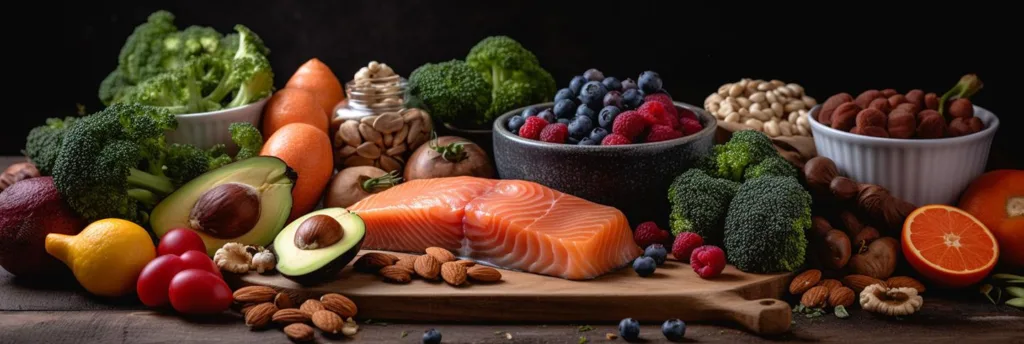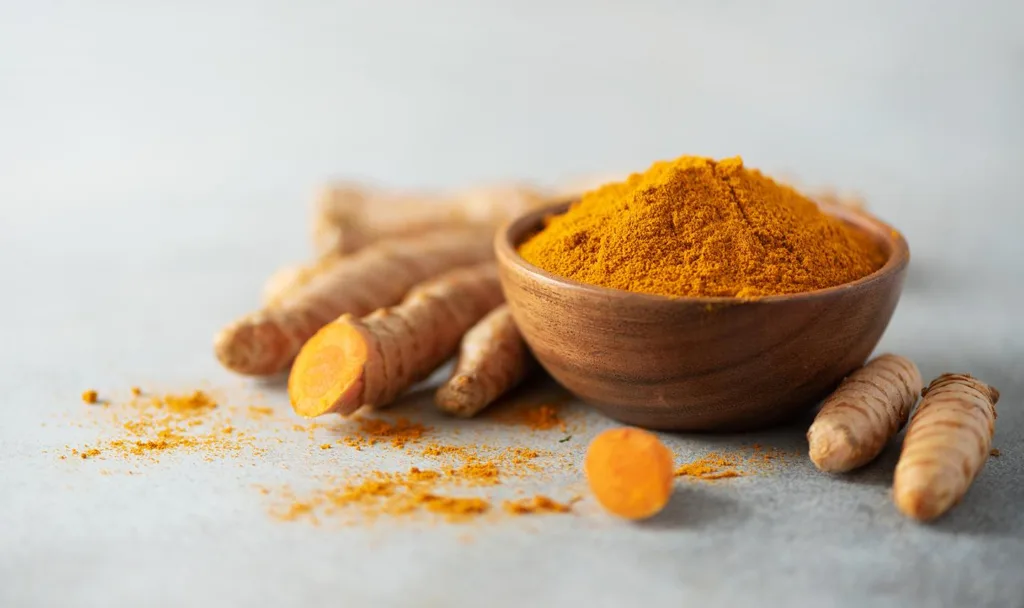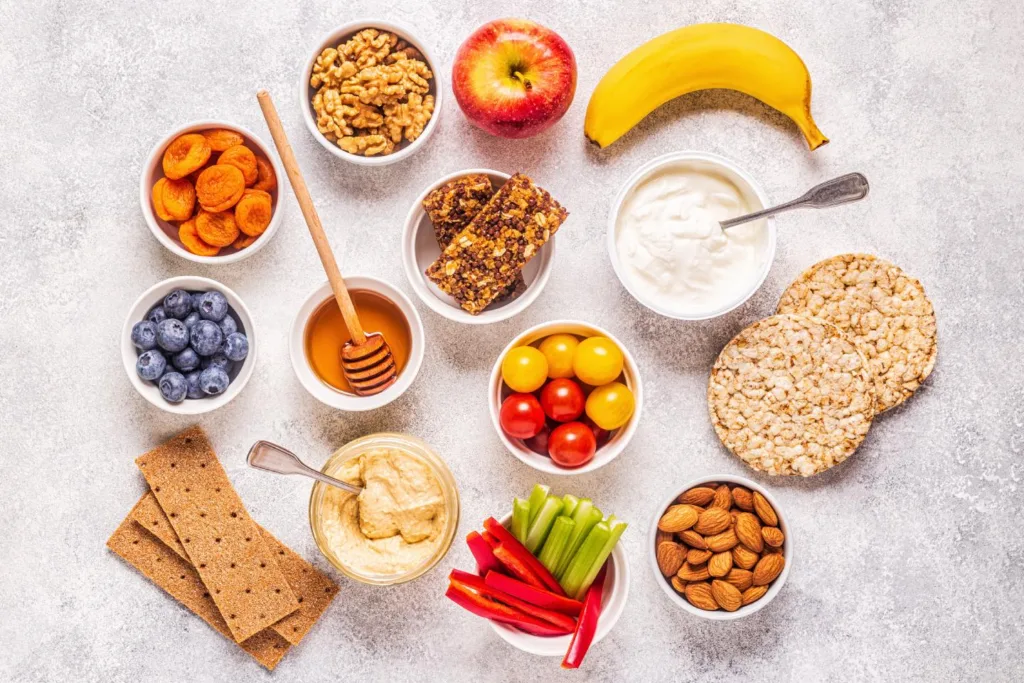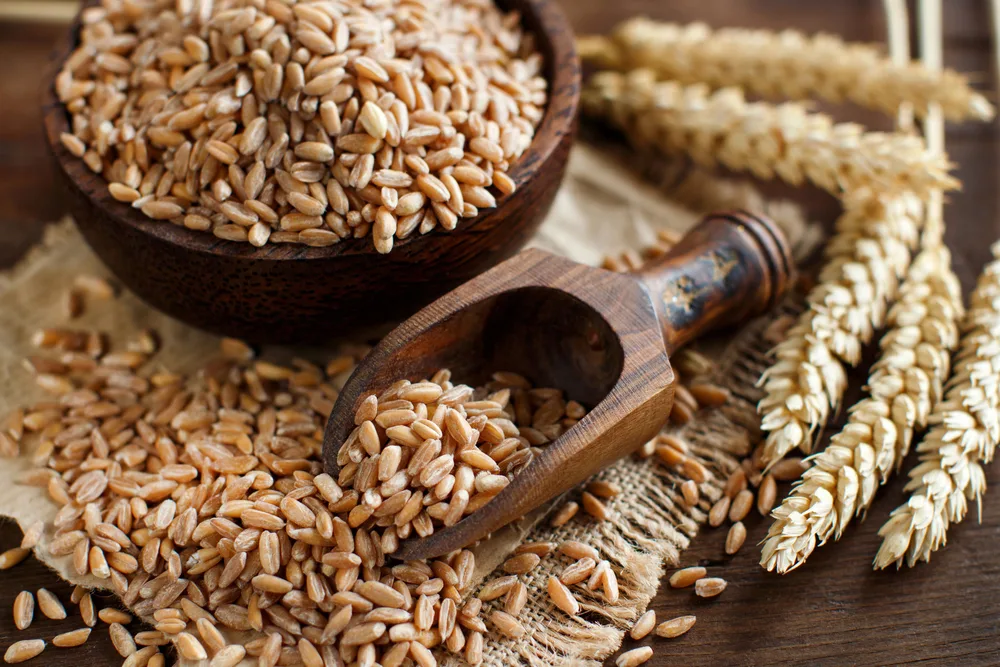Table of Contents
Your skin is home to a complex ecosystem of microorganisms known as the skin microbiome. A balanced microbiome is crucial for healthy skin, and probiotics (beneficial bacteria) play a role in maintaining that balance.
Diversity, quality, and ratio of beneficial to pathogenic bacteria are all important for the health of this ecosystem. A balanced population of beneficial bacteria can transform your skin’s appearance and minimize concerns like acne, eczema, and more.
If you’re wondering exactly how these friendly bacteria promote clear skin, this post is for you. You’ll learn about the science behind probiotics for skin health and discover the best products to incorporate.
The role of probiotics for skin
Probiotics are popular for their digestive health. But they can also balance your skin’s ecosystem, strengthen its defenses, and promote a healthy, radiant complexion. The best probiotic for skin health to look out for is Lactobacillus or Bifidobacterium. Here’s how they achieve this.
Balance the skin microbiome
Probiotics and harmful bacteria often vie for the same nutrients and living space. By out-competing the bad bacteria, beneficial bacteria limit their potential to cause problems like acne and inflammation.
Because certain strains produce lactic acid, which helps lower pH, it inhibits the growth of many harmful bacteria. Other strains produce bacteriocins, protein-like substances that stimulate the immune system’s defense mechanism and actively target and remove bad bacteria (4).
Strengthen the skin barrier
Beneficial bacteria can signal your skin cells to produce more ceramides (5). These essential fatty acids act as the mortar in your skin’s natural barrier. More ceramides mean a more robust and impenetrable barrier. This helps keep irritants out and locks in moisture, supporting hydration.
Reduce inflammation
Probiotics interact with your skin’s immune cells, helping them distinguish between harmless bacteria and invaders. In inflammatory conditions like eczema and psoriasis, probiotics can calm this immune response. A study found a significant link between beneficial gut bacteria and a reduced risk of eczema (6).
Promote wound healing
Beneficial bacteria can help wounds heal faster. They encourage the growth of new skin cells and help form new blood vessels in the wounded area (7).
By reducing inflammation in the wound, probiotics create an environment more conducive to proper tissue repair (8).
Protect against UV damage
Ultraviolet (UV) radiation triggers the formation of free radicals (9). These free radicals damage DNA and other vital cellular components (10). Specific probiotic strains have antioxidant properties and can neutralize some of these free radicals, reducing the overall damage caused by sun exposure (11). To harness the power of beneficial bacteria, you can apply topical probiotics to the skin. Probiotic-infused skin care products, like serums, moisturizers, and cleansers, deliver the benefits directly to your skin.
Probiotics work wonders for your skin by restoring its delicate balance. They strengthen the skin’s natural barrier and reduce inflammation, which can help ward off concerns like acne, eczema, and psoriasis. Good bacteria even speed up wound healing and offer protection against damaging UV rays. To reap these benefits, try probiotic-infused skincare products for a healthy, radiant complexion.

Do probiotics for the face work? Products, uses, and more
While research on topical probiotics is ongoing, they offer a promising approach to skincare. These products are designed to promote a healthy skin microbiome.
Common products include (12):
Cleansers
Probiotic cleansers gently remove dirt and excess oil while balancing the facial microbiome. However, prolonged cleansing can disrupt the good bacteria as well. A gentle touch and regular, limited use is key.
Serums and moisturizers
Serums and moisturizers can deliver concentrated beneficial bacteria directly to the skin. Look for products formulated with live cultures for optimal effects.
Masks
Masks offer an intensive treatment by combining probiotics with hydrating or soothing ingredients.
Natural probiotic foods for topical use
Some fermented foods, like yogurt, can be used as facial masks. Studies show that yogurt typically ranges from 4.0 to 4.4, closer to the slightly acidic range of healthy skin (13, 14).
While yogurt can balance your skin’s microbiome, varieties with additives can irritate the skin. Wherever possible, use plain yogurt instead with the fewest, cleanest, and simplest ingredients.
Even if you find foods with a pH close to your skin, it’s vital to do a patch test on your inner arm before applying it to your face. This helps identify any allergic reactions you might have to the food itself.





Probiotics for skin and gut: Products, uses, and more
Our gut and skin have a close relationship known as the gut-skin axis. It involves your immune system, hormones, and the microbiome. A healthy gut with a diverse population of beneficial bacteria can positively influence your skin. You’ll likely experience clearer, radiant skin with little to no breakouts.
The opposite is also true. Gut bacterial imbalances (dysbiosis) can lead to skin concerns like eczema, acne, and psoriasis (15). Compromised digestion can also wreak havoc on our skin due to microbial imbalances and “leaky gut” or intestinal permeability.
There are several ways to nourish your gut microbiome for healthier skin. One approach includes probiotic supplements, and another is to consume gut-friendly foods.
Probiotic supplements and skin health
Including oral supplements can support your gut microbiome. This helps to:
- Reduce inflammation
- Enhance skin barrier function
- Improve digestive functions and, therefore, nutrient absorption
- Reduce intestinal permeability
- Support immunity
Probiotic foods
While supplements offer a concentrated source of probiotics, you can also incorporate them into your diet by consuming friendly bacteria-rich foods (16).
Yogurt
Yogurt is fermented with Lactobacillus and Bifidobacterium strains. It’s a great source of probiotics and contains at least a million CFUs (17). If a label mentions live and active cultures, the product contains beneficial bacteria. Opt for plain yogurt and sweeten it naturally with fruit or honey. To reap the full benefits, consume a single serving a day.
Kefir
This is a dairy beverage fermented with a starter called kefir grains. Its diverse range of bacteria and yeasts gives it an abundance of health-promoting probiotics (18). It’s slightly tangier than yogurt and can be enjoyed plain or incorporated in smoothies.
Kimchi
Kimchi is a spicy Korean staple made from fermented cabbage. It’s packed with gut-friendly lactic acid bacteria like Leuconostoc, Weissella, and Lactobacillus (19). Their anti-inflammatory and antioxidant properties can contribute to a healthier gut and promote clear skin (20). However, it has a high sodium content, so moderation is key (21).
Sauerkraut
Another fermented cabbage dish, sauerkraut, is a good source of Lactobacillus plantarum, another gut-friendly bacteria (22). For the highest probiotic content, look for raw, unpasteurized versions.
Cheese
Aged cheese, like gouda, cheddar, and Swiss, may contain some probiotics because of the fermentation process involved. Because it’s high in sodium and saturated fat, which can negatively impact your health, moderation is key (23, 24).
Pickled vegetables
Pickles fermented with salt and water (instead of vinegar) can have some live cultures. Look for products labeled “naturally fermented” or “lacto-fermented” (25).
Natto
This Japanese fermented soybean dish is rich in Bacillus subtilis. It has been shown to support the immune system (26).
Miso
Another fermented soybean preparation, miso, contains antibacterial, anticancer, and anti-inflammatory properties (27).
Prebiotics
Prebiotics are non-digestible fibers that nourish good bacteria (28). They provide a food source that fuels probiotic growth and boosts their activity (29).
Here are a few you can incorporate to help beneficial bacteria thrive (30).
- Apples
- Bananas
- Berries
- Onions
- Garlic
- Asparagus
- Whole grains (oats, barley, brown rice)
- Legumes (beans, lentils, chickpeas)
A healthy gut can lead to clearer skin, while gut imbalances can lead to concerns like acne and eczema. You can support your gut microbiome by taking probiotic supplements and consuming probiotic-rich foods, like plain yogurt.
Furthermore, it is also important to obtain quality sleep and minimize or cope more efficiently with stress, as this also plays a role in skin health and wreaks havoc on the collective microbiome.





What are probiotics?
Probiotics are live, beneficial bacteria and sometimes yeasts, naturally present in your body and fermented foods that contribute to a healthy microbiome (1, 2).
There are many probiotic strains, primarily from the Lactobacillus and Bifidobacterium families (2). They compete with harmful bacteria for nutrients, limiting their ability to thrive and cause health problems.
Some types produce substances, like short-chain fatty acids (SCFAs) and lactic acid, that create a slightly acidic environment to discourage the growth of bad bacteria (3).
Tips to choose probiotics for your skin health
Selecting the most effective supplements can feel overwhelming. How do you know which contains the best probiotic for skin inflammation and other concerns? Here are a few things to keep an eye out for.
Strain selection
Research suggests specific strains can be more effective for certain skin concerns. When shopping for topical products, look for those containing live and stable cultures formulated specifically for facial application.
They may also contain ingredients that support a skin-friendly environment. Hyaluronic acid, ceramides, and prebiotics can help create a favorable environment for helpful bacteria to thrive on your skin.
Here’s a combination of probiotics that have shown promise in improving skin health.
Bifidobacterium
- Regulates oil production and reduces inflammation associated with acne.
- Helps soothe irritation and dryness in sensitive skin.
- Reduces the appearance of wrinkles and improves skin elasticity.
Lactobacillus
- Combats acne-causing bacteria and promotes a healthy skin barrier.
- Reduces inflammation and redness associated with acne.
- Improves skin barrier function and reduces inflammation. It can also alleviate symptoms of eczema by regulating immune response.
- Promotes collagen production and reduces UV-induced damage.
CFU count
Colony-forming units (CFUs) indicate the number of viable bacteria per serving. A higher count (from 1 million) suggests a more potent supplement. Focus on finding a balance between potency and what your body tolerates well. Start with a lower CFU (ideally a million) and gradually increase if needed.
Choose products that contain strains proven to benefit skin health, like Bifidobacterium and Lactobacillus. Opt for topical products formulated with live, stable culture because they include additional skin-supporting ingredients.





How can I increase probiotics in my skin?
Use skincare products, like cleansers, serums, and moisturizers formulated with live probiotic strains. These products deliver beneficial bacteria directly to the skin’s surface.
You can also support a balanced gut microbiome by taking supplements that contain strains like Bifidobacterium and Lactobacillus, which can indirectly benefit skin health.
Add fermented foods, like yogurt, kefir, and kimchi, to your diet to help diversify your gut microbiome, ultimately supporting skin health.
How long do probiotics take to clear skin?
Generally, it takes several weeks to months to see significant results on your skin (31). But this is not a one-size-fits-all result. Your unique skin microbiome, as well as your gut microbiome, existing skin conditions, underlying health concerns, and lifestyle, such as nutrition, sleep, and stress, all play a role in how your skin responds to probiotics.
Topical products can offer quicker results than oral supplements because they are applied directly to the skin. Also, regular and long-term use is key for noticeable and sustained improvement.
Is it safe to take probiotics daily?
Probiotics are considered safe for most healthy individuals when used as directed. When in doubt, consult your healthcare practitioner, especially if you have underlying health conditions or are pregnant or breastfeeding. They’ll advise you on the best dosage and usage for your needs.
Gradually introduce supplements to minimize potential side effects like gas or bloating. Start a lower dose and gradually increase if you respond well to them.
How quickly do probiotics start working?
You may experience early and subtle effects, like improved digestion or reduced bloating, within the first few days or weeks of taking probiotics. However, significant changes in skin health can take longer because they first have to influence your gut microbiome, which is a gradual process.
Summary
Probiotics are a fantastic frontier in skincare. They help reduce inflammation, balance your skin’s microbiome, strengthen its barrier, and keep free radicals at bay. To achieve clearer, healthier, and more radiant skin, you can use topical products and supplements or enjoy fermented foods like yogurt, kefir, or kimchi.
Have you used probiotics to support your skin health? What improvements have you noticed? Share them in the comments.

















Comments
0